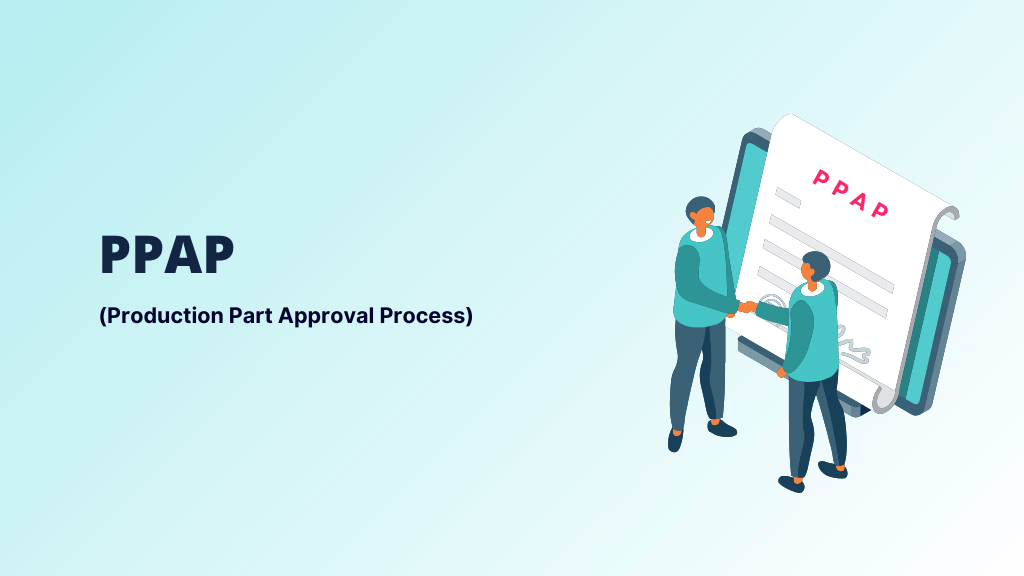Master sample is one of the critical element of Production Part Approval Process (PPAP). This sample make sure that manufactured parts as per customer specification.
As a quality engineer, you should know the importance, creation and maintenance of sample.
This article we will discuss every aspect of master sample in detail.
Let’s dive in….

What is a Master Sample in PPAP?
A Master Sample is a physical part taken from production and it is verified and approved by both manufacturer and customer.
It is consider as reference standard part produced from the process, and manufacturer have to produce similar quality part consistently throughout product lifecycle.
Master samples are basically retained and stored by supplier or customer also depends on condition. This helps to solve any future quality issues, because these parts act as a benchmarking for future production runs.
Purpose of a Master Sample
The primary purpose of a master sample are:
- Benchmarking: Sample works as a reference/standard part for future production parts to have a look and maintain same consistent quality.
- Validation: It is validated by customer therefore it confirms that the manufactured part meets dimensional, material, and performance specifications of the customer as per PPAP documentation.
- Problem Resolution: Master samples help to solve issues or misunderstanding between supplier and customer related to part quality.
- Training Tool: You can provide training to operators or junior quality engineershttps://qualityengineerstuff.com/skills-of-quality-engineer/ on product quality and characteristics of master samples. This is most practical way to showcase what we should expect from our parts.
When is a Master Sample Required?
The sample required during initial product development phase. And it is done at PPAP submission and approval process.
But we do PPAP submission when,
- A new part is develop.
- Changes in design, process, or materials.
- Production is transferred to new location.
- Change in supplier or sub-supplier.
- Customer request for a master sample.
How to Prepare Master Sample?
There is a step by step approach to create a master sample and approved them.
Creating a master sample involves 4 steps below:
- Manufacture the Sample:
- Produce parts as a regular production run which has a actual process, equipment and material. Make sure the parts are with same quality as regular produced parts.
- In PPAP production trial you can collect the parts from PPAP sample parts. It will be good to have the master sample parts that are produced in front of customer if you are doing a level 5 PPAP.

- Verify Compliance:
- Do dimensional check, material test, and performance evaluations (End-of-line testing) on the part.
- Prepare document such as dimensional result report and material record to show that parts confirm to customer specification.

- Approval by customer:
- Present samples to customer for inspection and approval.
- Before customer approval supplier need to evaluate the sample and do sign-off.
- Then customer will accept and approved the sample if it meets their requirement.
- You have to take the signature of customer on part surface using permanent marker, so that it will last.
- Label and Store:
- Create a master sample label and paste it on the part. Label should identify using information such as part number, revision level, and date.
- Store parts at secure place to prevent it from damage and degradation.

Master Sample Documentation
Everything happens in organization has a documentation process. Same apply for master samples.
There are many documents you need to create and consider while keeping sample with you.
Which includes,
- Dimensional inspection results.
- Material and performance test reports.
- A signed agreement by supplier and customer as a sample approval.
Challenges in Managing Master Samples
You can face many challenges while maintaining the master samples, some challenges includes,
- Storage Issues: Limited or no proper space for storage leads to damage the samples.
- Loss or Misplacement: Without proper identification and storage, you may lost or misplace the samples.
- Revisions and Updates: Continuous changes in design or process need to create new samples again and again. It is very time consuming activity.
To avoid these challenges, you need to follow some best practices and methods. Some best practices listed below.
Best Practices for Handling Master Samples
To have effectiveness of the master sample, follow below best practices and methods:
- Clear Identification: It covers the detailed information on label and the quality of label. Label quality should be as such that it last as long as possible.
- Proper Storage: Store master samples in controlled environment to protect from damage, contamination (oil, dust and rust), environmental effects.
- Regular Review: Do a periodic review to inspect sample on current stage of production and customer recent requirement.
- Employee Training: Train your employee, like operator, inspector, quality engineer for the sample requirement and which part accepted by customer.
Conclusion
Master sample are the physical parts signed by customer and supplier to have a mutual agreement on product quality.
It will be the future reference to maintain part quality considering it is the benchmark for supplier and customer. You should maintain it using proper identification, storage, and frequent reviews.
For manufacturing engineers, understand the need of master sample in PPAP documentation process is important to meet customer expectation and maintain product quality.
For more knowledge on manufacturing quality tools and techniques, explore other articles on our website.
FAQs
The supplier is responsible for master sample creation, but it should be approved by both supplier and the customer.
The retention period depends on the customer’s requirements, but generally it will kept till end of production. Some organization kept sample till end of production and 5 years more.
Yes, in some cases the parts produced at multiple location. Then each production site has its own master samples. Depends on your perspective you may maintain different samples or one.






